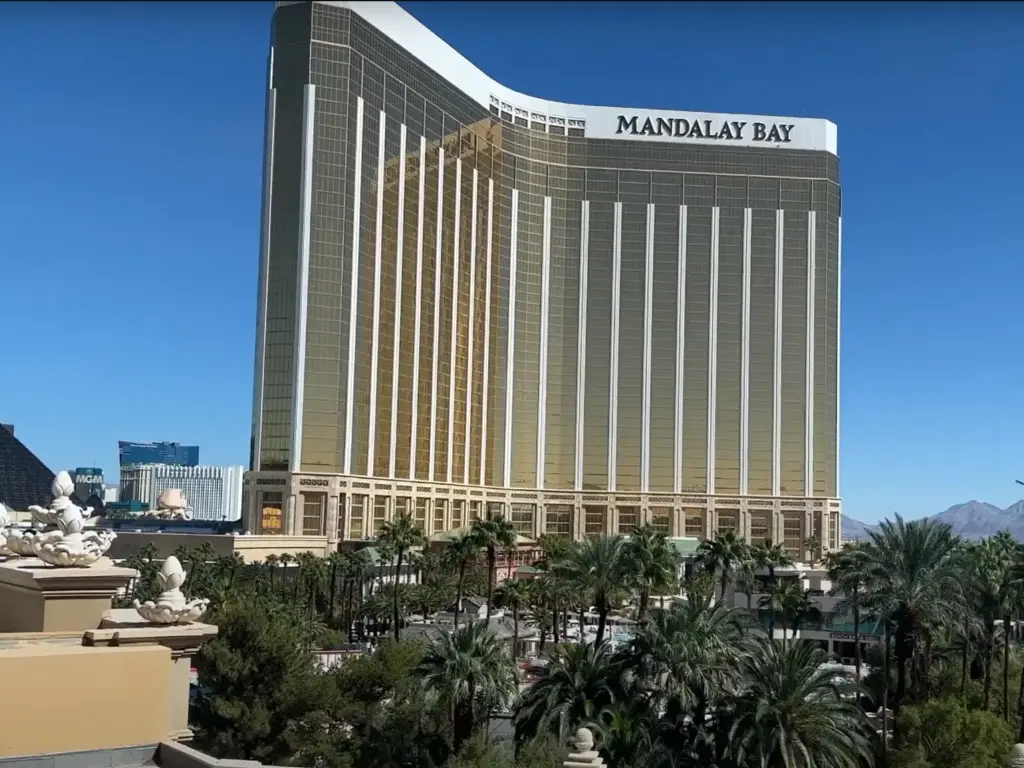Understanding the Importance of Trade Show Lead Capture
Trade shows provide an ideal platform for companies to showcase their products and services, introducing them to potential customers. The soul of a successful trade show lies in lead capture, the process of collecting details of potential customers, termed as leads. Hence, understanding the importance of trade show lead capture is imperative for any business.
Trade shows are usually dynamic, providing a live environment where businesses and customers connect directly, thereby creating potential opportunities for sales. This interaction process plays a crucial role in the lead capture process. Good lead data can help your business understand customer behaviors and preferences, enabling you to strategize marketing efforts more effectively. To capture leads effectively, and not just gather a stack of business cards, it’s necessary to deploy lead capture tools and work out a practical lead capture process.
Businesses successfully leveraging lead capture at trade shows are more likely to say “all the leads” turned into beneficial connections. Let’s explore how you can become that ‘lead generating machine’ and ensure that every trade show you attend brings with it a swarm of potential customers.
Setting Clear Objectives for Lead Capture at Trade Shows
Sometimes we get lost in the glitz and excitement of trade shows and lose sight of our true objectives, making lead capture feel like a capture-anything-that-moves exercise. To avoid this and make the most out of lead retrieval at trade shows, setting clear objectives is vital. These objectives can help define our lead capture strategy and measure its success or lack thereof.
Remember, your objective isn’t to bag a million business cards. It’s about accurately capturing potential leads, the ones who show genuine interest in your products or services, and can potentially increase your business revenue. This means that we need to identify quality leads at the show and capture them efficiently using our trusted lead capture tool.
Similarly, if our goal is to launch a new product at the trade show, we need to be looking at capturing leads that have a direct interest in this specific product. By setting clear objectives, we can ensure that our trade show lead capture efforts are directed towards achieving our primary goals.
These objectives then become the yardstick for measuring the success of a trade show, and inform the potential customer follow-up process. It’s not about collecting leads haphazardly, but about systematically capturing, qualifying, and following up with the leads that align with our objectives.
Preparing Your Booth for Effective Lead Capture
Your booth at a trade show acts as a physical manifestation of your company’s brand. Capturing trade show leads effectively begins with creating an engaging, informative, and welcoming booth.
Ideally, your booth should be visually appealing and inviting to event attendees, making them feel at ease and opening the door to fruitful conversations with your team. In addition to visually appealing, it’s imperative that your booth be practically appealing. It should be equipped with efficient lead capture devices and well-trained staff who can skillfully operate these devices to accurately capture lead data.Your booth’s layout should support your lead capture process.
Designing Compelling Lead Capture Forms

The lead capture form—this is where you get your hands on that precious lead data, and that’s a big deal. A well-designed form can enhance the user experience, boost form completion rates, and help you collect quality leads. So, what does a compelling trade show lead capture form look like?
When it comes to form design, less is usually more. Attendees at a trade show might turn away from a form that requires too much time or seems cumbersome to fill. Ideally, your form should collect essential contact information and offer the option of capturing additional data relevant to your objectives. Rating systems or star systems can be employed for quick qualitative data gathering. And with handy technology such as lead capture apps, forms can be made more interactive and engaging, even equipped with optical character recognition to auto-fill certain fields, saving the user’s time.
Plus, the data captured will represent genuinely interested potential customers, giving your sales team a solid foundation to start the follow-up process. A simple yet efficient form is going to be your best friend throughout the trade show.
Leveraging Technology: The Role of Lead Capture Apps
Technology wields a profound impact on the exhibition lead capture process, making it less labor-intensive, and more efficient and reliable. And at the heart of this evolution in trade show lead capture…well, say hello to lead capture apps.
| App | Function | Advantage |
| iCapture | Works offline and can be used to scan a trade show badge or business card | The tools you already use have capture features or compatible apps |
| HubSpot Business Card Scanner | Scanning every business card directly into your CRM | Streamline your activities,reduce your burden |
| Social Tables | Easily create to-scale diagrams, 3D renderings, flexible guest seating, online collaboration, and remote check-in for visitors through the mobile app. | Convenient and simple |
| WebMOBI | Event registration and self check-in,Audience engagement tools such as liverpool, live quizzes, q&a, and word clouds | Rich in function |
| Genius Scan | Any document from your phone or tablet, save it as a PDF or JPG, and email it. | For free |
Lead capture apps are game-changers. They work offline, meaning you can use them anywhere, anytime, without worrying about connectivity issues. With a lead capture app, you bid goodbye to the age-old practice of collecting business cards and welcome accurate and organized lead data.
The lead capture software can instantaneously record information from business cards or event badges using built-in scanners and store the data until you’re ready to download and use it. This not only minimizes lost leads but also ensures immediate data digitization, making the entire lead capture process more effective.
They are also known to substantially accelerate the follow-up process. Instead of waiting days or weeks to sort through business cards or massive piles of data, you can get back to leads while the event is still fresh in their minds. That’s leveraging social media onsite!
Training Your Staff for Successful Lead Capture
An efficient lead capture tool or a fantastic lead capture app will be no better than a fancy paperweight unless your team knows how to use it effectively. Training your staff for successful lead capture is as important as choosing the right lead capture tool.
As an event organizer, investing time and resources into staff training helps ensure that they understand your lead capture objectives and can use the lead capture tools chain-free. From business card scanning to using a #1 trade show app, make sure your staff is prepared for it all.
After all, it’s your staff who’ll be interacting with event attendees, capturing leads, and representing your company. It’s a creative and tactical dance that requires skill, charm, and the right lead retrieval software. They should be able to manage your booth, demonstrate how to use your product or service, and charm the leads with engaging presentations while skillfully guiding potential customers to your lead capture apps or forms.
Implementing Effective Follow-up Strategies
Trade shows can be the spark that ignites new business relationships, but it’s the follow-up process where the magic truly happens. A powerful follow-up strategy is as crucial as the lead retrieval process itself.
By using a trade show lead retrieval app, businesses can fast-track their follow-up process. Some lead capture apps can shout out immediate thank you emails as soon as a lead’s data is captured—talk about being efficient and prompt! Now imagine a thank-you email that also includes a reminder about what was discussed, or even better, a proposal!
Follow-up emails should be personalized and relevant to what was discussed at your booth. In some cases, a telephone call might work better than an email. Or, you might want to invite your leads to a webinar or send them material related to the product they expressed interest in.
The key is to keep the conversation alive after the trade show ends. This process demonstrates to your potential customers that you are genuinely interested and invested in their needs and aren’t just about capturing leads at trade shows.
Nurturing and Qualifying Trade Show Leads for Maximum ROI

Once you have efficiently captured leads using your trade show lead retrieval system, it’s time to nurture and qualify them for maximum return on investment (ROI). Nurturing leads involves building and maintaining a relationship with potential customers through regular communication. This can include follow-up emails, phone calls, newsletters, social media interaction, and any other method that effectively engages your leads. Your lead capture software can be an invaluable tool to automate and streamline this process. Remember to offer value in every interaction, solving problems, offering advice, and demonstrating your product benefits.
Next comes qualifying leads, which involves scrubbing your lead data to sift out the quality leads from those who are less likely to convert, helping your sales team focus their efforts wisely. Qualifying leads is all about identifying the potential customers who demonstrated a genuine interest in your product and are more likely to make a purchase. Your specific qualifying criteria can include the size of the business, the industry, budget, buying timelines, and any other factor relevant to your product or service. This makes managing leads a more targeted process.
Measuring and Analyzing the Success of Your Lead Capture Efforts
All the hard work you put into the trade show—from setting up your booth to capturing and nurturing leads—means very little if you’re not measuring the outcome of your efforts.
Analyzing lead data can give you insights into the effectiveness of your strategy. For instance, you might look at the number of leads you captured, the number of qualified leads, and the number of leads that converted into actual customers. Comparing pre-determined objectives with actual outcomes can provide a clear picture of the success of your trade show lead capture strategy.
Lead capture management tools generally have analytics built into them, offering a wide range of data—from individual lead behaviors to the overall success rate of lead retrieval for trade shows. These tools offer comprehensive reports, helping you identify areas of success and those needing improvement.
Staying Ahead: Emerging Trends and Innovations in Trade Show Lead Capture
As we progress in the digital age, innovations and trends continue to reshape the landscape of trade show lead capture. To stay ahead in this constantly evolving environment, it’s vital to be aware of and quickly adopt emerging trends.
One significant trend is the integration of AI and machine learning into lead retrieval systems. These technologies can greatly enhance lead scoring, helping businesses to better distinguish between qualified and unqualified leads.
Another emerging trend is the use of virtual and augmented reality at trade shows. These technologies allow businesses to provide immersive product demonstrations that can significantly engage potential customers, resulting in enhanced lead capture.
Furthermore, the COVID-19 pandemic has accelerated the transition towards virtual trade shows. Virtual trade show platforms not only replicate the experience of a physical trade show but also effortlessly track attendee behavior, providing rich lead data. A trade show app’s software plays a pivotal role in such scenarios, enhancing lead retrieval in a virtual environment.
Incorporating these emerging trends and innovations in your trade show lead capture strategy can keep you competitive and position you ahead of the curve.
Conclusion
Mastering trade show lead capture is a process that involves understanding its importance, setting clear objectives, preparing your booth, designing compelling lead capture forms, leveraging technology, training your staff, implementing efficient follow-up strategies, and nurturing and qualifying leads. Moreover, it requires measuring your efforts and staying ahead of emerging trends in the field. With these strategies in place, you are all set to make your next event a fruitful one!






